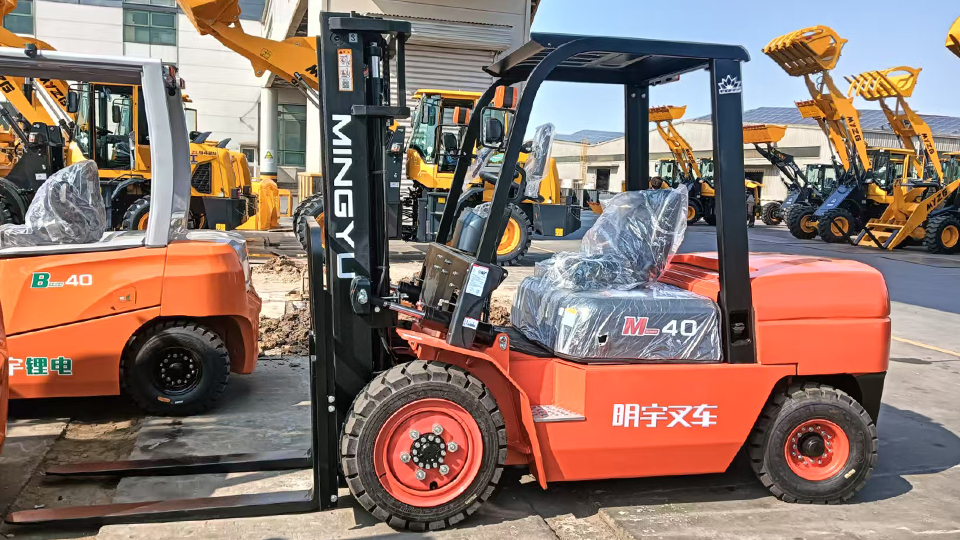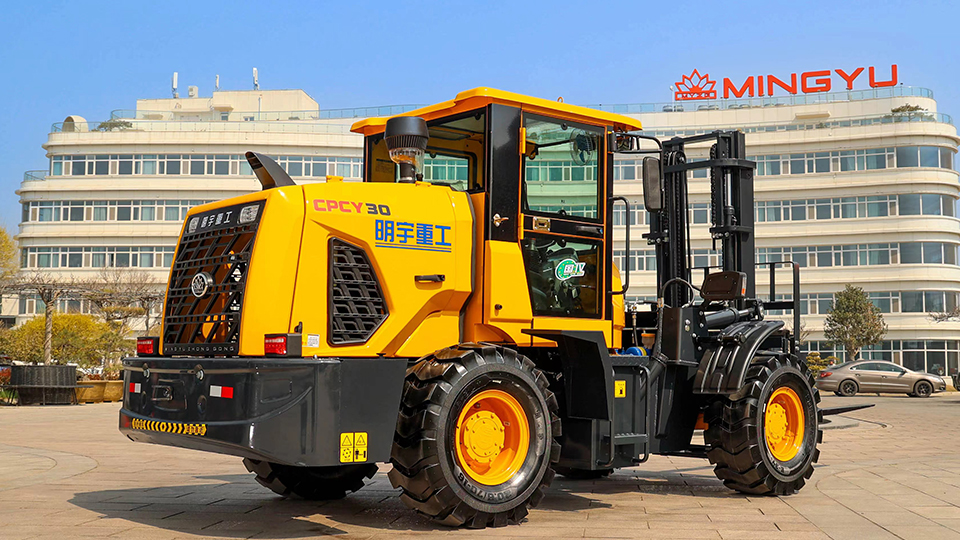
What Are the Benefits of Using a Sweeper Attachment? Enhancing Efficiency, Safety, and Longevity in Industrial Environments
In the dynamic world of industrial and commercial operations, maintaining a clean environment is not merely an aesthetic preference; it is a critical operational imperative. Dust, debris, spills, and foreign objects pose significant threats to equipment longevity, product quality, employee health, and overall workplace safety. While dedicated sweeping machines are available, their cost, storage requirements, and specialized nature can be prohibitive for many businesses. This is where the sweeper attachment emerges as a remarkably versatile, cost-effective, and highly beneficial solution.
This technical article will delve deep into the multifaceted advantages of integrating a sweeper attachment into existing equipment fleets, primarily focusing on forklifts, skid steers, and other utility vehicles. We will explore how these seemingly simple devices contribute to enhanced efficiency, improved safety, extended asset lifespan, and greater environmental responsibility, ultimately proving to be an indispensable tool for modern industrial facilities.
Understanding Sweeper Attachments: Design and Versatility
Before dissecting the benefits, it’s important to understand what a sweeper attachment is and its common variations. A sweeper attachment is a piece of equipment designed to be easily mounted onto an existing powered industrial truck or utility vehicle, leveraging its power source (hydraulic or mechanical) to drive a rotating brush system. They come in various designs, each suited for different applications:
Rotary Broom Sweepers (Angle Brooms): These attachments feature a large, horizontally mounted brush that rotates to push debris to one side. They are excellent for general sweeping, snow removal (lighter snow), and moving large volumes of material. They are often angled for effective debris collection.

Collection Sweepers (Hopper Sweepers): These are more sophisticated, featuring a main broom and often side brushes that sweep debris into an integrated hopper. The hopper can then be emptied, making them ideal for collecting finer dust and debris, as well as larger objects, in a contained manner. They often incorporate a water spray system for dust suppression.
Magnetic Sweepers: While not brush-based, magnetic sweepers are a form of attachment used to pick up ferrous metal objects (nails, screws, metal shavings) from floors, preventing tire punctures and equipment damage. They are often used in conjunction with brush sweepers.
Specialized Sweepers: Some attachments are designed for specific tasks, such as pressure washing with an integrated brush, or those with vacuum systems for ultra-fine dust control.
The primary appeal of these attachments lies in their ability to transform existing machinery into multi-functional cleaning powerhouses, eliminating the need for dedicated, single-purpose sweepers.
Core Benefits: A Comprehensive Analysis
The advantages of using a sweeper attachment extend across various facets of industrial operations, impacting finances, safety, efficiency, and environmental compliance.
1. Cost-Effectiveness and Optimized Resource Utilization
One of the most compelling arguments for sweeper attachments is their economic advantage.
Lower Capital Investment: Purchasing a standalone sweeping machine can represent a significant capital outlay. Sweeper attachments, conversely, are considerably less expensive. This allows businesses to achieve high-performance cleaning capabilities without a large upfront investment.
Leveraging Existing Equipment: By attaching to existing forklifts, skid steers, or utility vehicles, businesses maximize the utility of their current fleet. This avoids the cost of purchasing, maintaining, and storing an entirely separate machine. The depreciation of existing assets is already accounted for, and the incremental cost for the attachment is much lower.
Reduced Maintenance Costs: Sweeper attachments typically have fewer complex components than dedicated sweeping machines. This translates to simpler maintenance routines, fewer parts to replace, and lower overall maintenance costs. The primary wear component is the brush, which is designed for easy replacement.
Elimination of Dedicated Operator Training (Partially): While specific training for the attachment's operation is needed, operators are already familiar with the base machine (e.g., forklift). This reduces the learning curve and the cost associated with training an entirely new set of operators for specialized cleaning equipment.
Lower Running Costs: For hydraulic-driven attachments, they draw power from the base machine's existing power source, often without significantly impacting fuel consumption or battery life compared to running a separate engine for a dedicated sweeper.

2. Enhanced Workplace Safety
A clean workplace is inherently a safer workplace. Sweeper attachments play a crucial role in mitigating various hazards:
Slip, Trip, and Fall Prevention: Debris, spills, dust accumulation, and loose objects are primary causes of slips, trips, and falls. Regular sweeping with an attachment effectively removes these hazards, creating safer pedestrian walkways and work zones.
Reduced Risk of Tire Punctures and Equipment Damage: Nails, screws, metal shavings, glass fragments, and other sharp objects on the floor are notorious for causing costly tire punctures on forklifts, pallet jacks, and other rolling equipment. Magnetic sweepers, in particular, excel at removing these ferrous materials, saving on tire replacement costs and reducing equipment downtime. Even brush sweepers help by consolidating debris that might otherwise embed in tires.
Improved Air Quality and Respiratory Health: Fine dust particles generated by operations (e.g., concrete dust, wood dust, grain dust) can be significant respiratory hazards. Collection sweepers, especially those with integrated dust suppression systems (water spray or vacuum), significantly reduce airborne particulate matter. This protects employees from respiratory illnesses, allergies, and long-term health issues, contributing to a healthier work environment and potentially reducing absenteeism.
Fire Hazard Mitigation: Accumulations of combustible dust (e.g., wood dust, flour, certain chemicals) pose a serious fire and explosion risk. Regular and thorough sweeping removes these dangerous fuel sources, significantly reducing the likelihood of such incidents.
Better Visibility: Excessive dust can obscure vision, both for operators and pedestrians. By reducing airborne dust, sweeper attachments contribute to clearer visibility, reducing the risk of collisions and accidents.
Compliance with Safety Regulations: Many industrial environments are subject to strict health and safety regulations (e.g., OSHA in the US) regarding cleanliness and air quality. Using sweeper attachments helps businesses meet these regulatory requirements, avoiding potential fines and legal liabilities.
3. Increased Operational Efficiency and Productivity
Sweeper attachments streamline cleaning processes, leading to noticeable gains in productivity:
Faster Cleaning Times: Manual sweeping is labor-intensive, time-consuming, and often less effective. A powered sweeper attachment covers large areas much faster and more thoroughly than manual methods, freeing up personnel for more value-added tasks.
Versatile Application: The ability to attach a sweeper to a common forklift or skid steer means that the cleaning equipment is readily available where and when it's needed. There's no need to move a dedicated machine from storage or wait for a specialized cleaning crew. This agility improves response times for spills or sudden debris accumulation.
Multi-Purpose Equipment: The base machine (e.g., forklift) can perform its primary material handling tasks for the majority of the day and then quickly be converted into a powerful sweeper when cleaning is required. This maximizes the utilization of a single piece of equipment.
Consistent Cleaning Quality: Machine-driven sweeping provides a consistent and thorough clean that is difficult to achieve with manual methods, especially over large areas. This uniformity contributes to overall operational smoothness.
Improved Workflow: A clean environment facilitates smoother material flow and easier navigation for vehicles and personnel, reducing bottlenecks and improving overall workflow efficiency.
4. Extended Asset Lifespan and Reduced Wear and Tear
Dirt and debris are abrasive and corrosive. Regular sweeping protects valuable assets:
Reduced Wear on Flooring: Accumulated grit and abrasive particles act like sandpaper under foot traffic and vehicle tires, accelerating wear and tear on concrete, epoxy, or other industrial flooring. Sweeping removes these abrasive elements, extending the life of flooring surfaces and reducing the need for costly repairs or resurfacing.
Protection of Equipment and Machinery: Dust and debris can infiltrate sensitive machinery components, leading to premature wear of bearings, gears, and other moving parts. It can also clog filters, leading to overheating and reduced efficiency. Regular sweeping keeps the environment around machinery clean, significantly extending its operational life and reducing unexpected breakdowns.
Prevention of HVAC System Clogging: Airborne dust can accumulate in HVAC systems, reducing their efficiency, increasing energy consumption, and potentially leading to costly repairs. By controlling dust at the source, sweepers help maintain cleaner air filters and ducts.
Enhanced Product Quality and Reputation: In industries sensitive to contamination (e.g., food processing, pharmaceuticals, electronics manufacturing), a clean environment is paramount for product quality. Sweeper attachments help prevent contamination from dust and debris, safeguarding product integrity and protecting brand reputation.
5. Environmental Responsibility and Compliance
Modern businesses are increasingly held accountable for their environmental impact. Sweeper attachments contribute to greener operations:
Dust Control and Emission Reduction: Collection sweepers with dust suppression capabilities significantly reduce airborne particulate matter, contributing to better local air quality and reducing the environmental footprint of industrial operations.
Waste Management: Efficient collection of debris simplifies waste segregation and disposal. By containing waste in hoppers, it's easier to manage and transport for proper recycling or disposal, aligning with waste reduction initiatives.
Reduced Chemical Usage: While not directly replacing all chemical cleaning, a cleaner floor surface often requires less intensive chemical cleaning or less frequent deep cleaning, reducing the use of harsh detergents and their environmental impact.
Choosing the Right Sweeper Attachment: Key Considerations
To maximize the benefits, selecting the appropriate sweeper attachment is crucial:
Type of Debris: What kind of material will you be sweeping? (Fine dust, heavy debris, metal shavings, leaves, snow?) This will dictate whether you need a collection sweeper, rotary broom, or magnetic sweeper.
Area Size and Type: How large is the area to be cleaned (warehouse, parking lot, construction site)? What kind of surface (smooth concrete, asphalt, gravel)? This impacts the required sweeping width and brush type.
Base Machine Compatibility: Ensure the attachment is compatible with your forklift, skid steer, or other utility vehicle in terms of mounting, hydraulic flow (if applicable), and weight capacity.
Dust Control Needs: Is dust suppression critical? If so, look for models with integrated water spray systems or vacuum functionality.
Hopper Capacity (for collection sweepers): Consider the volume of debris you expect to collect to determine the appropriate hopper size, minimizing emptying frequency.
Brush Material and Durability: Different brush materials (polypropylene, wire, mixed) are suited for various applications and wear characteristics.
Ease of Attachment and Detachment: Quick-attach systems enhance efficiency.
Maintenance and Parts Availability: Consider the ease of brush replacement and availability of spare parts.
Conclusion: An Indispensable Tool for Modern Industry
The humble sweeper attachment, when integrated intelligently into an industrial or commercial operation, transcends its simple function to become a powerful tool for holistic improvement. Its benefits ripple through an organization, impacting financial prudence, employee well-being, operational fluidity, and long-term asset preservation.
By transforming existing equipment into versatile cleaning machines, businesses can achieve superior cleanliness standards, significantly reduce safety hazards, extend the lifespan of their infrastructure and machinery, and foster a healthier, more productive work environment – all without the prohibitive costs associated with dedicated cleaning fleets. In an era where efficiency, safety, and sustainability are paramount, the sweeper attachment stands out as a smart, strategic investment, solidifying its position as an indispensable component in the modern industrial toolkit.
Name: selena
Mobile:+86-13176910558
Tel:+86-0535-2090977
Whatsapp:8613181602336
Email:vip@mingyuforklift.com
Add:Xiaqiu Town, Laizhou, Yantai City, Shandong Province, China